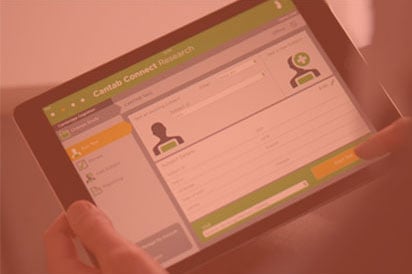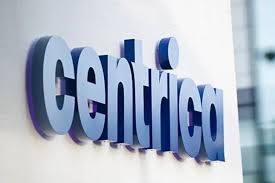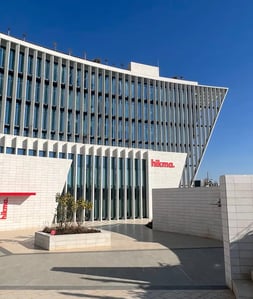Cambridge Cognition Holdings plc (LON:COG), the neuroscience technology company which develops and markets digital solutions to assess brain health, announced today its unaudited Interim Results for the six months ended 30th June 2018.
Strong sales performance and order pipeline entering second half
An encouraging first half performance with 13% like for like sales growth provides evidence that the investment made in the commercial operation is beginning to reap rewards.
Financial & Operational Highlights
· Like for like revenue +13% to £3.63m (H1 2017: £3.21m)
· Major contract win delivered in March 2018
· Ratio of Orders received to Revenue of 1.77
· Like for like loss before tax of £0.22m (H1 2017: £0.39m loss)
· Sales orders more than doubled to £4.87m (H1 2017: £2.13m)
– NeuroVocalix voice platform generating revenue with pharmaceutical partners
– Wearable technology increased +356% to £0.70m
– CANTAB Recruit increased by +335% to £0.39m
Financial results under new accounting standard IFRS 15 (see note 3 to interim financial statement)
· Reported revenue of £2.75m
· Reported loss before tax of £1.02m
· Loss per share of 5.0p
Commenting on the results Steven Powell, Chief Executive Officer of Cambridge Cognition, said: “The first half has been characterised by the Company delivering against its promised strategy as evidenced by a strong sales performance. Our continued investment in R&D means that we remain at the forefront of innovation in digital health and neuroscience and have created platforms for further, future commercial growth.”
CHIEF EXECUTIVE OFFICER’S REVIEW
The first half of 2018 has seen continued investment in both commercial growth and technology development. This investment has been rewarded with an increase in sales orders to £4.87m, an increase of £2.74m, or 128.6%, on the first half of 2017. This growth in sales orders includes, but is certainly not limited to, the major contract win previously announced in March 2018.
Whilst the number of sales orders grew 6.0% in comparison to H1 2017, the average value of sales orders almost doubled. This clearly shows that whilst our sales reach is expanding, we are also adding more services and executing more value-added activities and so achieving greater value from our sales orders.
Revenue on a like for like basis has seen an increase of 13.1%, with a strong increase in software revenues resulting from the excellent sales orders number. Services revenues are lower than the comparative period, but we are confident that with the increased order book created by the improved sales performance this trend will be reversed in H2 2018.
Sales orders arising from products launched in 2016 and 2017 have increased. In particular, growth in bespoke services has been driven by £0.65m of sales orders in relation to digital health. This demonstrates that our focus in this area is justified and shows promise that this area can act as a driver of future revenues for the Company.
The continued development of our technology base, including wearable technology and enhanced functionality and utility of our core products, has driven an increase in R&D costs from £0.56m in H1 2017 to £0.86m in H1 2018. Our work in this area continues to be supported by both grant funding and commercial partners. R&D investment has driven our voice technology to the point of commercialisation and given rise to new intellectual property in the field of digital phenotyping. Significantly, and in the short term, the expansion of the Company’s technology platforms, has established the business as a leading innovator and therefore served to attract an increasing number of commercial partnerships.
Financial Highlights
The increase in sales orders over last year resulted in a like for like revenue of £3.63m, up 13% on H1 2017. In prior years, the Company had adopted IAS 18 as the basis for recognising revenue, where software was recognised on contract signature. As a result, in the past there was a stronger correlation between sales orders and revenue recognition.
However, as of 1 January 2018, the Company has adopted the new revenue standard, IFRS 15. Under IFRS 15, the majority of software revenue must be recognised as the software is used. Usage is dependent on many factors, the majority of which are not in our control. Furthermore, given the transition rules of IFRS 15 applied by the Company, the 2018 results are measured under an IFRS 15 basis while being presented alongside the 2017 results, which continue to be presented under an IAS 18 basis. Note 3 to the interim financial statements sets out these changes in more detail and gives more comparative information.
The timing of the introduction of IFRS15, effective 1 January 2018, coincided with the end of a period of lower than average order intake making the presentation of our accounts this year more challenging than they might otherwise have been.
In 2017, when the Company was still reporting under IAS 18, we reported that two significant orders had been delayed to 2018 and as such our order intake for 2017 was £5.10m (2016: £7.08m). Our revenues at both the half year and the full year in 2017 were broadly in line with the previous year. The delay in these two orders not only affected our 2017 results but in converting to the new standard, the opening deferred revenue which would prove a major driver in our H1 2018 revenue, was also low.
In the first half of 2018 we booked orders of £4.87m (2017: £2.74m). The larger of the two deferred contracts was received in this period albeit too late to have an impact on revenue as we no longer recognise the software element up front as we did under the previous standard. Consequently, despite the increased orders, revenues under IFRS 15 have fallen to £2.75m in 2018 due to the lower order intake in 2017. The reduction compared to the IAS 18 result is a direct consequence of the lower 2017 sales order intake of £5.10m when compared with both 2016 and 2018.
Reported group revenues for H1 2018 and H1 2017 are therefore as follows:
|
(Newly adopted) IFRS 15 Basis |
H1 2018 (IFRS 15) £m |
H1 2017 (IAS 18) £m |
Change £m |
Change % |
|
Software |
1.45 |
1.36 |
0.09 |
6.6 |
|
Services |
1.27 |
1.78 |
(0.51) |
(28.7) |
|
Total Software & Services |
2.72 |
3.14 |
(0.42) |
(13.4) |
|
Hardware |
0.03 |
0.07 |
(0.04) |
(57.1) |
|
Total Group Revenues |
2.75 |
3.21 |
(0.46) |
(14.3) |
On an IAS 18 basis, revenues are as below. Only software revenue recognition is changed when moving from IAS 18 to IFRS 15; service and hardware revenue recognition has not changed.
|
IAS 18 Basis |
H1 2018 (IAS 18) £m |
H1 2017 (IAS 18) £m |
Change £m |
Change % |
|
Software |
2.33 |
1.36 |
0.97 |
71.3 |
|
Services |
1.27 |
1.78 |
(0.51) |
(28.7) |
|
Total Software & Services |
3.60 |
3.14 |
0.46 |
14.6 |
|
Hardware |
0.03 |
0.07 |
(0.04) |
(57.1) |
|
Total Group Revenues |
3.63 |
3.21 |
0.42 |
13.1 |
As noted above, on a like for like basis the increase in sales orders drives an increase in software revenues of £0.97m and 71.3%, however this is not repeated on an IFRS 15 basis. On an IFRS 15 basis software revenue for the period is £1.45m, which is nonetheless 6.6% ahead of last year’s reported figure.
Services revenues have declined £0.51m, 28.7%, compared to H1 2017. This decline is in our core areas of study and data management and is a direct consequence of the dip in orders last year. This decline will be reversed over the coming 12 months on the back of the recent order intake.
Hardware revenues continue to be a small part of our business, though we remain equipped and responsive to any requirements our customers may have for hardware.
Cost of sales increased £0.06m to £0.37m (H1 2017: £0.31m). This results in a reported gross margin of 86.5%, and a gross margin on a like for like basis of 87.4%. H1 2017 gross margin was 90.4%. The reduction in gross margin is due to an increase in commission charges. Commissions have increased due to the increased value of sales orders as noted.
Total administrative costs for the period (incorporating sales and marketing, clinical operations, R&D and general administration) increased by £0.12m (3.6%) to £3.42m (H1 2017 £3.31m). This increase is driven by a 52.1% increase in R&D costs, continuing the increased investment seen in the second half of 2017. After periods of investment in 2016 and 2017, our sales and marketing spend has decreased by 21%, reflecting a stabilised position and a move away from bonus-based incentives to commission based incentives. There has also been some investment in our operational capacity and expertise, as we continue to deliver higher value products and services. This has been mitigated by a reduction in other costs. Our share-based payments credit arises due to a revision in management assumptions on the vesting position of certain awards. We remain committed to incentivise staff through share option awards.
Reported EBITDA (under IFRS 15) was a loss of £0.99m (H1 2017: £0.35m loss). Losses before tax were £1.02m (H1 2017: £0.39m loss). On a like for like basis, EBITDA was a loss of £0.20m and losses before tax were £0.23m, showing a like for like improvement in bottom line results. The reported loss per share is 5.0p (H1 2017: 1.8p loss).
Net cash outflow from operations during the period was £0.95m, an increase from the outflow of £0.55m for the first half of the prior year. The net cash outflow is broadly in line with the IFRS 15 loss, with a working capital movement of £0.14m outflow. A combination of the lower level of orders received last year and the invoicing profile of the larger contracts received in H1 2018 combined to suppress the H1 2018 closing balance. The Company expects the cash outflow to be reversed in the second half on the back of the strong order intake. The net cash balance at 30 June 2018 was £0.88m (as at 31 December 2017: £1.86m; 30 June 2017 £1.82m), a decrease of £1.02m in the period.
On the balance sheet, current liabilities have increased by £2.08m. This is driven by an increase in deferred revenue of £1.94m. This arises both due to the IAS 18 to IFRS 15 transitional adjustment booked on 1 January 2018, but also due to the ongoing treatment of software revenues in accordance with IFRS 15. The adjustment booked on 1 January 2018 has been booked to retained earnings as mandated by IFRS 15. The adjustment in deferred revenue was £2.01m, with a small asset of £0.05m booked for deferred commissions.
Otherwise the balance sheet remains healthy with a strong receivables balance and no external debt. The Company believes the balance sheet gives the Company the resources it needs to continue executing on its goals.
Operational highlights
The strong half for sales orders has resulted in an increase in the value of contracted revenues yet to be recognised to £5.95m at 30 June 2018. This compares to £4.01m at 1 January 2018, an increase of £1.94m and 48.4% (both numbers on an IFRS 15 basis).
The Company also demonstrated a ratio of Orders received to Revenue in H1 2018 of 1.77. Given the increased disconnect between sales orders taken and revenue recognised brought about by IFRS 15, performance indicators such as sales orders taken and the ratio of orders to revenue take on increased importance going forwards.
New products launched in 2016 and 2017 are now showing excellent sales results. Sales orders for CANTAB Recruit increased by 335% to £0.39m in H1 2018 compared with H1 2017. As announced in April 2018, our Recruit offering is now established in two major Phase III trials. We are pleased with this growth and we expect more growth from this product family, which has the potential to translate from project to annuity revenue.
Sales orders for bespoke products, including wearable technology have increased 356% to £0.70m. This growth has been driven by significant wins in the digital health space. Whilst one particular contract win was announced in May 2018, further wins in this space have continued to drive progress in this area and all have the potential to lead to recurring license revenue over time.
R&D investment in 2016 and early 2017 expanded our core range of products through innovations such as CANTAB Recruit and Cognition Kit. From 2017 onwards, we have been expanding and improving the functionality and utility of our core products to allow for their use across a greater range of needs, for example a wider range of clinical outcome measures. Following on from CANTAB Prime, this expansion in utility will allow us to serve a wider range of customers with a wider range of products and services for any one project.
We have also commenced various projects to utilise our expertise and technology in the mental health arena. Research partnerships with universities and commercial partnerships have commenced and we look forward to the results. We also announced in June CANTAB BrainHealth, a new product to assess mental health and wellbeing, will be launched in corporate health markets later this year.
Our innovation projects concerning voice recognition technology and novel digital biomarkers continue apace. Our voice platform, now branded as NeuroVocalix, has progressed rapidly. The first tests on this platform have been translated into product and we have signed our first revenue generating collaborations with pharmaceutical partners to begin to pilot the technology in neurological and psychiatric clinical trials.
The digital phenotyping programme, using cognitive testing to match responsive sub-populations of patients with specific drugs, has progressed rapidly through the first half of 2018. A new cognitive test has been identified to serve as a digital biomarker in schizophrenia and new intellectual property has been generated. We expect this work to translate into a proof of concept study in 2019, which will be significant in demonstrating utility of this approach and adding enormous value to this programme.
The activities undertaken this year have built a foundation comprising three key business drivers, outlined below; that we believe will take the business into a new, larger growth phase.
· Electronic Cognitive Outcome Assessments (“eCogOA”). This is an expansion to our core business made possible by the core platform enhancements referred to above. This will allow our software to be used for a broader range of outcomes and widen our offering to both existing and new customers and has been driven by our customers requiring incorporation of multiple trial outcome assessments onto a single platform such as Connect. We believe that this move will more than double our current addressable market size in pharmaceutical clinical trials.
· Near-Patient Digital Health. We will continue our focus on near-patient technologies, including wearable, mobile and AI technologies and our new CANTAB BrainHealth product. These innovations enable frequent, objective and remote assessment of cognition to improve frequency of data collection and patient engagement, identifying risks to brain health early in order to allow health providers to intervene and prevent decline. Overall, we believe these technologies will both improve patient health and reduce the burden on global health services and generate recurrent revenues from channel partner agreements.
· Digital Phenotyping. We will continue our innovative development work on digital phenotyping, utilising our proprietary cognitive assessments to identify sub-groups within patient populations, matching them with personalised interventions to enhance treatment efficacy and health outcomes.
Overall, our ambitions to enable our customers to assess cognition anytime and anywhere, in a continuous and effortless way to improve global brain health underpins our future plans and strategies.
Outlook
A strong sales performance in H1 2018 with a strong sales order pipeline means that we are well placed for the remainder of the year. Our progress on innovative programmes, both within our own products and in the wider field of neuroscience, continues to excite our partners and customers. This is helping to establish Cambridge Cognition as a ‘go to’ partner for neuroscience measurement technology. In an industry that continues to look for and embrace technological advances, we approach the future with confidence for both the scientific and commercial results to come.







































